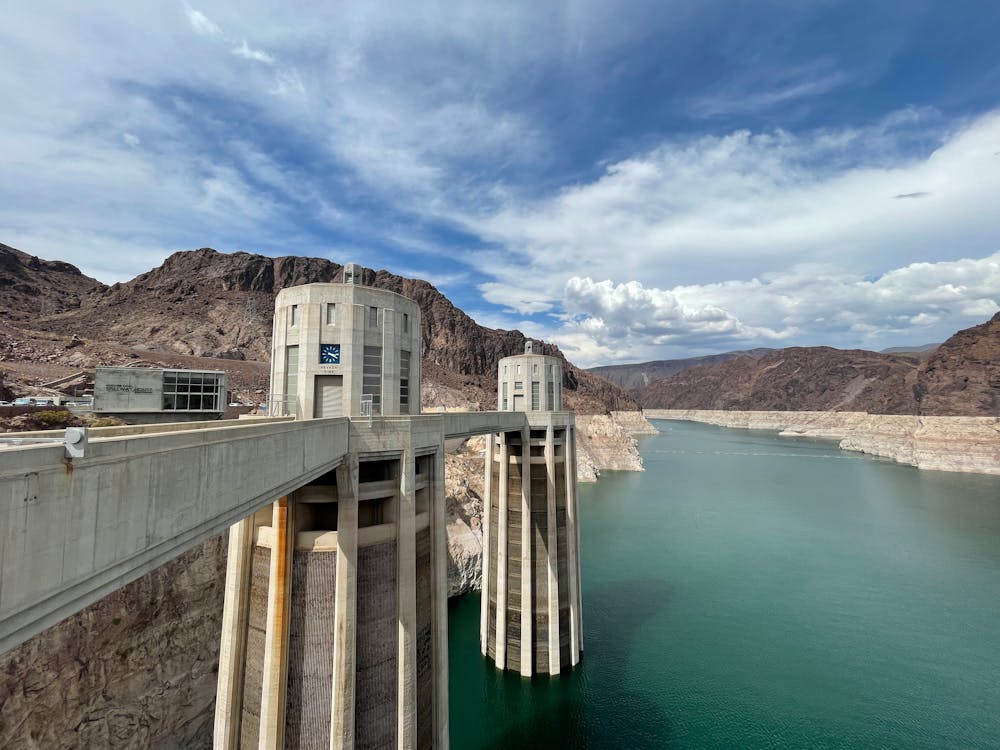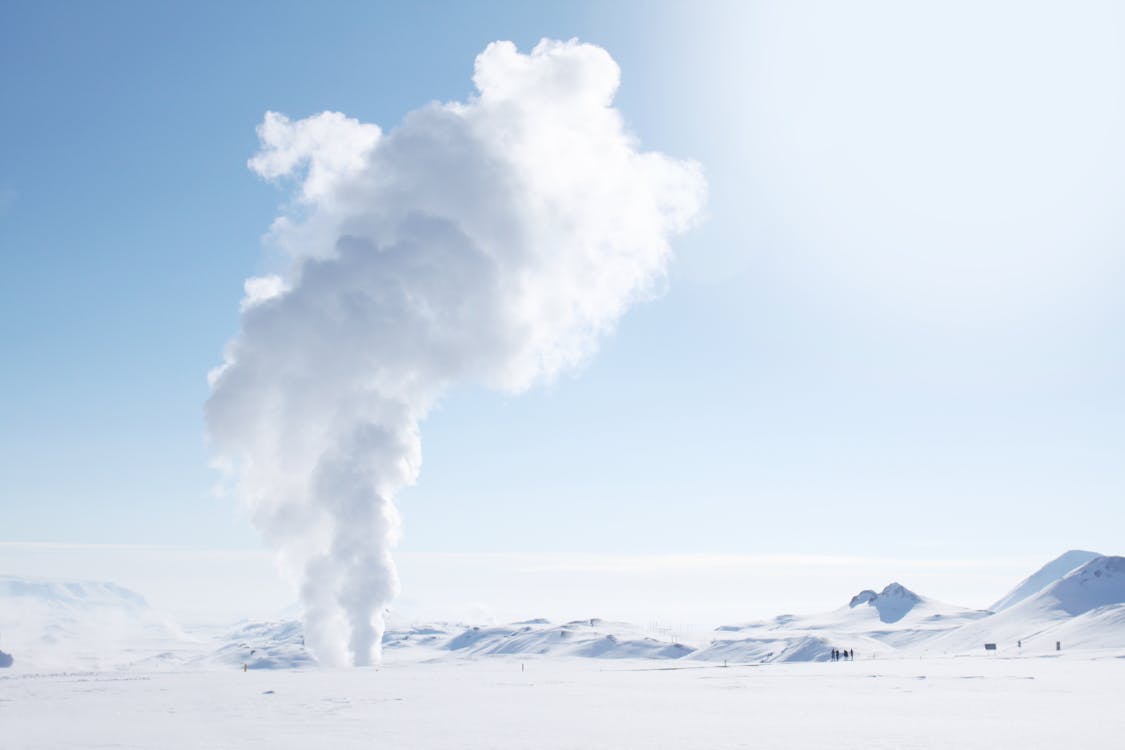The importance of sustainable energy solutions cannot be overstated, as the world faces increasing environmental challenges, including climate change and air pollution. Sustainable energy solutions can help mitigate some of the harmful effects of climate change and lead us toward a brighter future.
As more people become aware of the benefits of sustainable energy solutions, the growing demand for clean and renewable energy sources can power homes, businesses, and industries while minimizing their environmental impact.
Why Traditional Energy Solutions Are Unsustainable
For several reasons, traditional energy sources, such as coal, oil, and natural gas, are unsustainable. For one thing, they are finite resources. Fossil fuels took millions of years to form, and we are depleting them much faster than they can be replenished.
At some point, we will run out of these resources, and they will become increasingly difficult and expensive to extract. Because they are non-renewable, once we use them, they’ll be gone forever, and we’ll have to find alternative ways to meet our energy demands.
On top of that, the extraction, transportation, and consumption of traditional energy sources have significant environmental consequences. Burning fossil fuels releases greenhouse gasses, such as carbon dioxide and methane, into the atmosphere, contributing to global climate change.
Climate change is already severely impacting the planet, from rising sea levels to loss of biodiversity, which needs to be addressed.
There’s also the risk of spills and leaks, which can cause pollution and habitat destruction, leading to even further environmental damage. Traditional energy sources also require a large amount of water, which can lead to further problems.

The Need To Transition To Sustainable Energy Sources
Relying on traditional energy sources, such as coal, oil, and natural gas, has significant environmental and economic consequences.
A major one is greenhouse gas emissions and pollution. Fossil fuel combustion releases greenhouse gasses and pollutants that can harm the atmosphere, lead to diseases, and destroy habitats. Using water in fossil fuel combustion also causes harm to water bodies, as the water it uses up is released back into rivers and lakes.
The use of fossil fuels also threatens our energy security since many countries rely on imports sensitive to supply and price fluctuations.
When looking at the environmental effects from an economic lens, we see significant costs attached to reducing the impact and resolving issues, from healthcare costs to environmental cleanup efforts which are quite expensive.
The need to transition to sustainable energy sources is becoming increasingly urgent. As the negative impacts of traditional energy sources on the environment and economy become more apparent, governments, businesses, and individuals recognize the importance of transitioning to sustainable energy.

Types of Sustainable Energy Solutions
Several types of sustainable energy solutions are available today, each with its advantages and disadvantages.
Solar Energy
Solar panels capture energy from the sun and convert it into electricity. Solar energy is a clean and renewable energy source that can power homes, businesses, and even entire communities. One disadvantage of solar energy is that it depends on weather conditions and may not be as effective in areas with limited sunlight.
Wind Energy
Wind turbines generate electricity by harnessing the power of the wind. Wind energy is also a clean and renewable energy source that can be used to power homes, businesses, and communities. However, like solar energy, it depends on weather conditions and may not be as effective in areas with the limited wind.
Hydropower
Hydropower generates electricity by harnessing the power of moving water, such as rivers and waterfalls. It is a reliable and renewable energy source that can power homes, businesses, and entire communities. However, it requires significant infrastructure and can negatively impact ecosystems and fish populations.
Geothermal Energy
Geothermal energy is generated by harnessing the heat naturally produced inside the earth. It is a clean and renewable energy source that can be used to power homes, businesses, and communities. However, it is limited to areas with geothermal activity, which may not be accessible in all regions.
Biomass Energy
Biomass energy is generated by burning organic matter, such as wood, crop waste, and animal waste, to produce heat or electricity. While it is a renewable energy source, the production and combustion of biomass can have negative environmental impacts, such as deforestation and air pollution.
Tidal Energy
Tidal energy is generated by harnessing the power of ocean tides. It is a clean and renewable energy source that can be used to power homes, businesses, and communities. However, like hydropower, it requires significant infrastructure and can negatively impact ecosystems and marine life.

The Benefits of Sustainable Energy Solutions
Sustainable energy solutions offer a range of benefits that make them a better option than traditional energy sources.
Reduce Carbon Emissions
Perhaps the most obvious benefit of sustainable energy solutions is that they do not contribute towards destroying the planet. Sustainable energy solutions are a key tool in the fight against climate change. By replacing fossil fuels with clean energy sources such as wind, solar, and hydropower, we can significantly reduce carbon emissions and slow the pace of global warming.
Improve Air Quality
Traditional energy sources such as coal and oil contribute to air pollution, which can have serious health consequences. In contrast, sustainable energy solutions such as wind and solar produce no air pollution and can help improve air quality.
Create Jobs
The transition to sustainable energy sources creates jobs in various industries, from manufacturing and installation to research and development. These jobs can help boost local economies and provide opportunities for workers.
Increase Energy Security
By diversifying our energy sources and relying less on foreign oil and gas, we can increase our energy security and reduce our dependence on unstable regions of the world.
Cost Effectiveness
Sustainable energy solutions can help reduce energy costs over the long term, as they often require less maintenance than traditional energy sources and have lower operating costs.
Increase Grid Resilience
Sustainable energy solutions such as wind and solar can help increase our energy grid’s resilience by providing distributed energy sources that are less vulnerable to outages and other disruptions.
Protect Natural Resources
Extracting and transporting fossil fuels can have serious environmental impacts, including habitat destruction and water pollution. Sustainable energy solutions such as hydropower and geothermal energy can help reduce our reliance on these harmful practices.
Foster Innovation
Sustainable energy solutions require ongoing research and development to improve efficiency and reduce costs. Investing in sustainable energy solutions can foster innovation and support the growth of a new generation of clean energy technologies.
Improved Energy Access
Sustainable energy solutions can help access energy to people who currently lack it. This is especially important in developing countries, where a lack of access to electricity can limit economic and social development.
Diversified Energy Mix
Using a mix of sustainable energy sources can help countries diversify their energy mix, reducing their exposure to price fluctuations in any one energy source. This can help to mitigate risks associated with relying too heavily on a single energy source and provide more stable and predictable energy costs over the long term.

The Challenges of Implementing Sustainable Energy Solutions
While sustainable energy solutions offer many benefits, there are also challenges to their implementation.
High Upfront Costs
One of the major challenges of implementing sustainable energy solutions is the high upfront costs associated with many technologies. For example, installing solar panels or wind turbines can require a significant investment that may be difficult for some individuals or businesses to afford. While the costs of many sustainable energy solutions have been decreasing in recent years, they can still be a barrier to adoption.
Intermittency
Some sustainable energy sources, such as wind and solar, are intermittent, so they only produce energy when the wind blows, or the sun shines. This can create challenges for grid operators in balancing supply and demand. To address this challenge, energy storage systems such as batteries are needed to store excess energy generated during peak production times.
Energy Storage
While energy storage systems can help address the intermittency challenge, they can also be expensive and unsuitable for all applications. For example, large-scale energy storage systems may be required to support renewable energy sources on a grid-wide scale. Still, these can be prohibitively expensive for many countries or regions.
Limited Availability
Some sustainable energy solutions, such as geothermal and hydroelectric power, are only available in certain areas. This can limit their widespread adoption and create challenges for regions that do not have access to these energy sources.
Opposition From Vested Interests
The traditional energy industry is vested in maintaining the status quo and may resist efforts to transition to sustainable energy sources. This can challenge policymakers and individuals trying to implement sustainable energy solutions.
Lack of Political Support
Implementing sustainable energy solutions requires political will and investment. Some governments may be reluctant to invest in sustainable energy solutions due to competing priorities or ideological differences.
Regulatory Barriers
Regulations can create barriers to the adoption of sustainable energy solutions. For example, some regulations may favor traditional energy sources or make it difficult for individuals and businesses to install solar panels or wind turbines. These barriers can be difficult to overcome and may require changes in policy or legislation.
Public Perception
Sometimes, the public may be skeptical of sustainable energy solutions or not fully understand their benefits. This can create challenges in building public support for sustainable energy solutions. Education and outreach efforts may be needed to help individuals understand sustainable energy’s benefits and build support for their implementation.

The Future of Sustainable Energy Solutions
The future of sustainable energy solutions looks promising as the world continues prioritizing the transition to cleaner, more sustainable energy sources. Here are some things we can expect shortly.
Continued Cost Reductions
Many sustainable energy solutions are becoming more cost-competitive with traditional energy sources. This trend is expected to continue as technologies improve, economies of scale are realized, and supply chains become more efficient.
Advancements in Energy Storage
Energy storage is critical to the success of many sustainable energy solutions. As energy storage technologies improve, they will become more affordable and widely available. This will enable greater integration of renewable energy sources onto the grid and make them more reliable and predictable.
New Technologies
There is a lot of innovation happening in the field of sustainable energy, with new technologies being developed all the time. For example, researchers are exploring new materials for solar panels that can increase efficiency and reduce costs. Other areas of research include wave energy, tidal power, and hydrogen fuel cells.
Government Support
Many governments around the world are providing support for the transition to sustainable energy sources. This includes policies such as subsidies for renewable energy, carbon pricing, and regulations promoting sustainable energy use. This support will be critical in driving the transition to sustainable energy.
Increased Public Awareness
As more people become aware of the benefits of sustainable energy, there will be increased demand for these solutions. This can create a virtuous cycle, where demand drives innovation, which, in turn, drives down costs and makes sustainable energy more accessible to more people.
As more and more efforts are being made towards embracing renewable energy sources as our primary energy source, CNPS is proud to stand at the frontlines of the cause. Our renewable energy solutions allow individuals and businesses to minimize their carbon footprint and work towards making a better future for us and our planet.
CNPS offers energy and electronics equipment and solutions globally. Their services include oil and gas solutions such as OCTG and drilling, renewable energy solutions like geothermal and wind power, electronics solutions and nonmetallic solutions, like fiberglass pipes and tanks.


